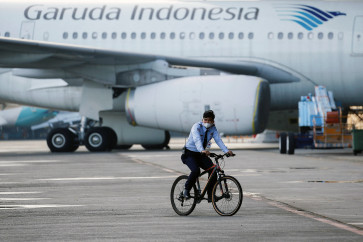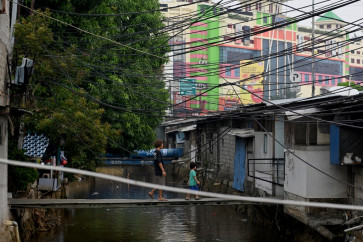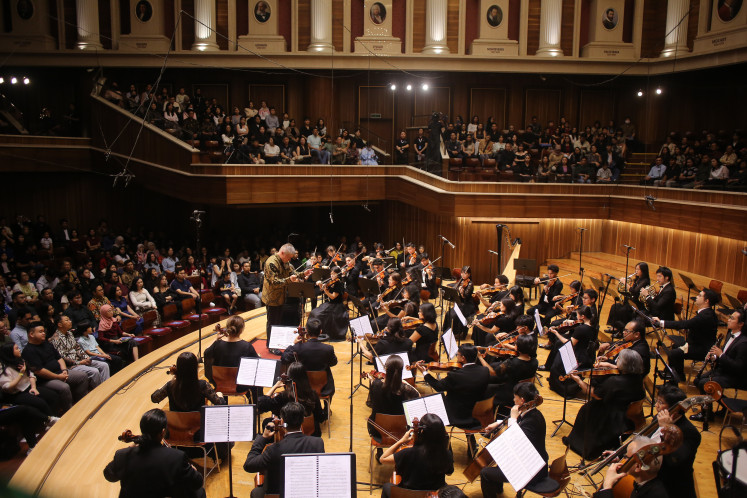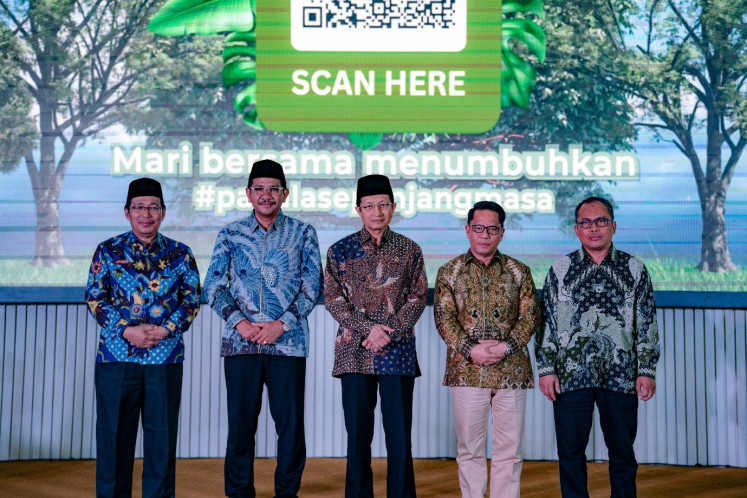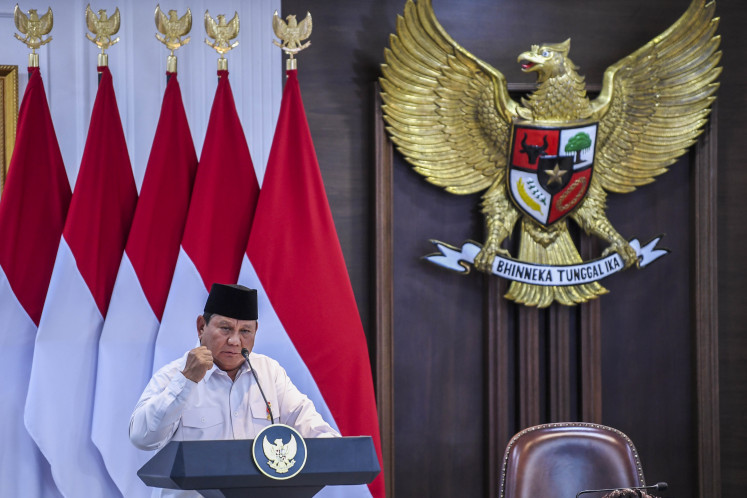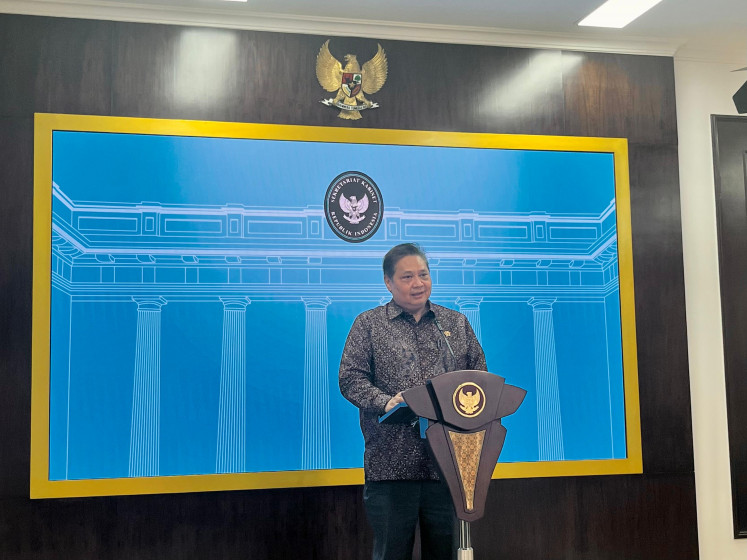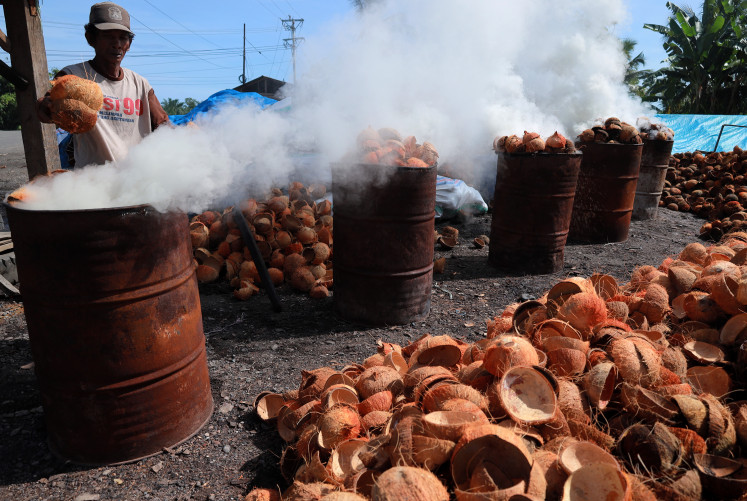100 years of dangerous filmmaking
The Film Censorship Board (LSF) marked its 100th anniversary last year, and its presence sparks controversy among filmmakers until this day, as film remains the only art form in Indonesia that is subject to censorship.
Change text size
Gift Premium Articles
to Anyone
 Fragmented: The poster for documentary Potongan (Cuts) illustrates censorship. (Meiske Taurisia/File)
Fragmented: The poster for documentary Potongan (Cuts) illustrates censorship. (Meiske Taurisia/File)
T
he Film Censorship Board (LSF) marked its 100th anniversary last year, and its presence sparks controversy among filmmakers until this day, as film remains the only art form in Indonesia that is subject to censorship.
Although there is legal basis for censoring as stipulated in the 2009 Film Law, the details are rather unspecific. However, a clear pattern remains: films broaching the subjects of sexuality and ideology are the ones most vulnerable to their scissors.
Film programmer and former Kineforum manager Alexander Matius said the censorship board had begun to flex its muscles more assertively during the authoritarian New Order era. The board mainly got rid of scenes appearing to promote certain ideologies or depicting sexuality.
Examples include Sophan Sophiaan’s Bung Kecil (Little Boy), which was finished in 1978 but had to be reworked and was finally released only in 1983, after passing the censorship board’s requirements for the big screen.
A similar case was Sjuman Djaya’s film Yang Muda Yang Bercinta (Youngsters who make love), the release of which was delayed from 1977 to 1993, when it finally saw the light of day — eight years after the director himself had passed away.
Read also: Jokowi's latest video reveals Slank, Burgerkill as his favorite bands
“While Bung Kecil was censored for raising issues of social inequality, Yang Muda Yang Bercinta was censored because it was deemed to be carrying political propaganda by featuring poems by dissident poet WS Rendra, as well as for showcasing casual sex among its characters,” Alexander told The Jakarta Post.
Paranoia over political overtones could go a little too far — even to a hilarious extent — during the Soeharto era: the title of Deddy Armand’s 1989 film had to be changed from Kiri Kanan OK (Left and Right is okay) to Kanan Kiri OK, because the placement of the word “kiri” first was perceived to infer that the banned leftist ideology was okay.
Fast-forward almost two decades and you have Edwin’s Babi Buta Yang Ingin Terbang (The Blind Pig Who Wants to Fly), which was rejected by the LSF in 2008 on the grounds of telling the story of the 1998 riots on the verge of the downfall of Soeharto. Other reasons cited for not allowing the film to pass censorship were ambiguous terms like “sex by the sodomites” and “erotic breathing.”

Female director Chairun “Ilun” Nissa captured the issue, along with the censorship that befell a 2014 film called The Look of Silence (Senyap) on the bloody 1965 massacre of people thought to support communism, directed by Joshua Oppenheimer, in her 2016 documentary Potongan (Cuts).
Film critic Eric Sasono, however, said the reins on sexual content were sometimes loosened during times when the film industry was in crisis, such as when horror and comedy films dominated the screens starting in 2008, propelling actresses such as Julia Perez, Dewi Persik and even Japanese porn star Maria “Miyabi” Ozawa.
Due to censorship, these films with ideological themes could only be enjoyed in small cinema cafés and closed, small group screenings.
Read also: BPK holds film competition for youth
“Because of this, discussion spaces [to talk about the 1965 and 1998 violence] are being shut down, leaving the generation born during the 1990s and the 2000s unaware of this part of Indonesian history, which still is a wound. Therefore, we can never discuss the wounds and reconcile,” Ilun says.
In the film Potongan, LSF board members argued that scenes pertaining to the 1998 riots in Babi Buta Yang Ingin Terbang had to be censored for fear they might trigger social unrest. Likewise, House of Representatives’ Commission I member and former reporter Arief Suditomo said in the film that Indonesians still had a low level of education and might be provoked by such films.
“These comments, besides being very patronizing, are also inaccurate. Films like Babi Buta have a very specific target audience. Here, censorship also has to take into consideration the cinema culture that is about to be created: Who is the targeted audience?” Eric said.
He said that such censorship was unfair, as it might prevent spillover effects — or the possibility that the film is also watched and responded to by those who are not actually part of its intended audience.
“Films have to reach as wide an audience as possible,” he said. Not to mention that censorship also curtails filmmakers’ creativity. “Filmmaking requires free imagination, a mind that considers all possibilities available.”
In response to these statements, LSF commissioner and spokesman Rommy Fibri wrote in an email that the board was committed to keeping Indonesia’s democracy growing.
“Those of us who work for the board’s 2015-2019 period are open to the possibility where films with any kind of content, including Babi Buta, pass censorship, be it for festival criteria or for limited circles.”

